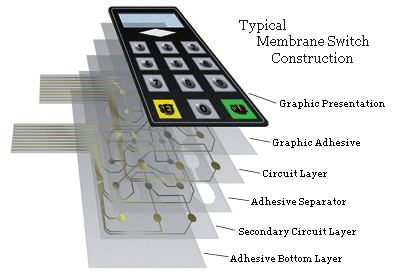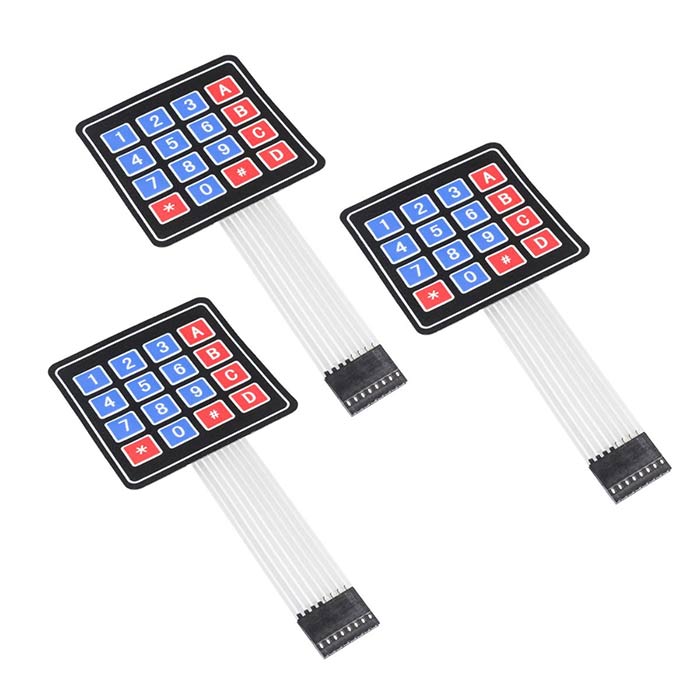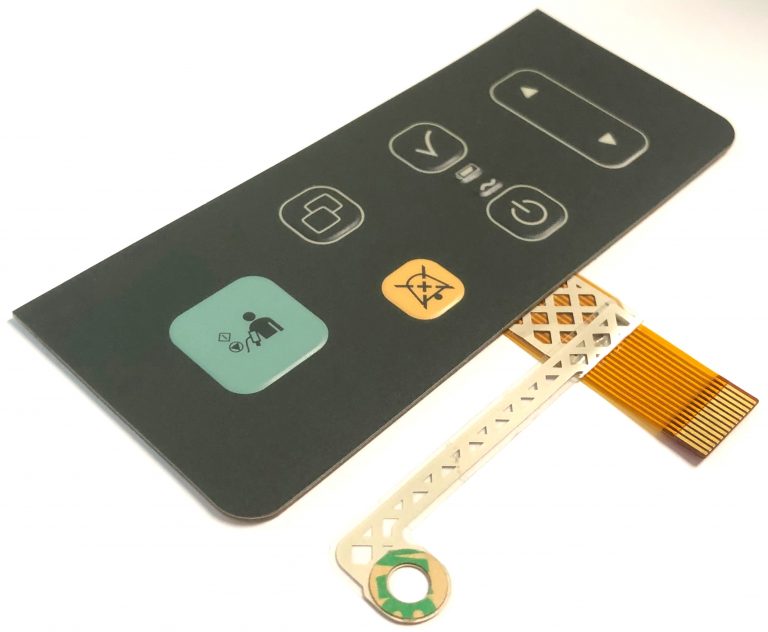What to Look for When Choosing a Membrane Change for Your Project
When you're picking a membrane layer switch for your task, numerous vital elements enter into play. You'll need to believe about the materials, design, and exactly how well it lines up with your brand. Longevity and use are essential, but so is the credibility of the manufacturer. Understanding these components can help you make an informed decision-- one that balances high quality and expense effectively. Allow's explore what you ought to think about to assure your option fulfills all your task requires.
Comprehending Membrane Layer Switch Components
When you dive right into the globe of membrane layer buttons, it's vital to realize the key parts that make them operate. The button normally is composed of 3 major layers: the visuals overlay, the spacer layer, and the circuit layer. The visuals overlay provides the aesthetic user interface, presenting switches and signs you require for simple navigation. Below that, the spacer layer guarantees there suffices distance in between the circuit and the overlay, permitting the button to trigger without continuous pressure.
The circuit layer, typically made from published conductive inks, produces the electric pathways. When you push a button, the circuit closes, sending out a signal to the device. Understanding how these layers function with each other helps you select a membrane switch that's reliable and fits your project demands. Pay attention to the thickness and material of each layer, as these aspects affect toughness and performance in numerous settings.
Material Selection and Its Influence
Picking the right materials for your membrane layer button can greatly influence its performance and longevity. The choice of substrate, normally polyester or polycarbonate, affects longevity and flexibility. Polyester is much more abrasion-resistant, while polycarbonate provides better clearness and strength.
Next, take into consideration the adhesive. It needs to endure ecological variables like moisture and temperature level modifications. A strong adhesive assurances that your membrane switch remains intact in time.
Don't forget the graphic overlay. The printing technique utilized, whether silkscreen or electronic, impacts the switch's visual appeals and longevity. Top notch inks will withstand fading and damaging, keeping a professional look.
Last but not least, consider ecological conditions. If your gadget will be subjected to extreme chemicals or severe temperature levels, select products made to withstand these challenges. Your selections in products will inevitably establish the button's reliability and individual contentment.
Layout Considerations for Individual Experience
Selecting the right products lays the structure for a successful membrane switch, yet the layout also plays a significant function in customer experience. You'll intend to review just how the format influences functionality (membrane switch manufacturer). Maintain buttons and icons user-friendly and well-spaced, making it simple for individuals to navigate without confusion

Shade and comparison are additionally necessary; guarantee that your layout is aesthetically attractive yet still functional. High comparison aids individuals quickly recognize buttons, particularly in low-light conditions.
Last but not least, reflect on the overall aesthetic. A sleek and modern-day style can boost individual perception and make your item a lot more enticing. Stabilizing functionality with an interesting design will certainly bring about a better individual experience and ultimately, an extra successful product.

Environmental Elements and Toughness
When picking a membrane layer button, you require to consider just how it'll do in various settings. Aspects like temperature resistance, wetness and chemical exposure, and mechanical wear can considerably impact its resilience. Recognizing these aspects will assist you pick a button that withstands your particular conditions.
Temperature Level Resistance Requirements
As ecological conditions can differ extensively, recognizing temperature resistance is crucial for making sure the sturdiness of your membrane switch. You require to examine the temperature level range in which your device will operate. Heats can create materials to break down, leading to failure, while low temperatures might make components weak and prone to fracturing. Make certain to examine the requirements of the materials made use of in the button, like the adhesive and overlay, as they directly impact efficiency. It's also a good idea to consider possible temperature level variations and their results on the switch's integrity. By selecting a membrane button with adequate temperature level resistance, you'll enhance its life expectancy and keep functionality in difficult settings. Pick sensibly to stay clear of pricey replacements down the line.

Dampness and Chemical Direct Exposure
Wetness and chemical direct exposure can substantially influence the performance and durability of your membrane button, so it's crucial to comprehend the atmosphere in which it will certainly be made use of. If your job involves high moisture or exposure to fluids, seek safety finishings and sealants that can boost resistance to dampness. In addition, take into consideration the types of chemicals your switch may run into. Specific materials can degrade when revealed to solvents, oils, or harsh cleaners. Picking the right materials, like polycarbonate or polyester, can help withstand these aspects. Always consult the producer's specifications for chemical compatibility to ensure your membrane switch maintains its capability with time. By prioritizing moisture and chemical resistance, you can improve the longevity of your button in tough atmospheres.
Mechanical Put On and Tear
While you may focus on functions like aesthetics and capability in your membrane switch, additional hints mechanical deterioration can substantially influence its efficiency with time. Think about exactly how usually the switch will certainly be utilized and the environment it'll remain in. Frequent pressing can result in deterioration of materials, causing concerns like tactile comments loss or perhaps change failure. Look for versions with durable layouts, such as those with safety overlays that stand up to scrapes and wear. Furthermore, look for specifications on cycle life, which indicates the number of presses the switch can manage before revealing indicators of wear. Selecting a sturdy button assurances durability and integrity, protecting against pricey replacements and downtime in your project. Constantly element in toughness together with aesthetic appeals and capability for peak efficiency.
Personalization Options for Branding
When it concerns branding your membrane switch, modification choices are vital. You can select layout components and shades that show your brand name, together with certain logo positioning and size to improve presence. Furthermore, picking the right products and appearances can boost the overall look, making your item stick out.
Layout Components and Shades
A variety of layout components and shades can make your membrane layer switch not just useful however also aesthetically attractive, enhancing your brand name identity. When picking colors, think of your brand name's scheme; they need to reverberate with your target market and evoke the ideal emotions. You can additionally discover different surfaces like matte or glossy to develop different visual effects. Do not forget structures; adding a tactile element can enhance customer experience and make your button stick out. Think about integrating customized graphics or patterns that line up with your brand name message. By attentively choosing layout aspects and shades, you not just create a product that looks wonderful yet also strengthens your branding regularly and successfully.
Logo Design Positioning and Dimension
After completing your layout components and colors, the following action is to focus on logo positioning and size. Your logo is a vital aspect of your branding, so you'll desire it to stick out without overwhelming various other layout elements. Reflect on where your logo will be most noticeable and impactful; usual placements include the top or center of the button.
Think of the size as well-- also large and it could eclipse practical elements, also tiny and it could get lost. Go for a balance that permits your logo design to be quickly well-known while keeping the overall aesthetic appeals. Don't neglect to contemplate just how the logo straightens with user interaction. This attention to detail will enhance both functionality and brand name identification in your task.
Material and Texture Options
Picking the appropriate products and structures for your membrane button can considerably improve both its capability and Find Out More aesthetic appeal. You'll intend to review alternatives like polyester or polycarbonate, as they use longevity and resistance to wear. The texture of the surface area likewise plays a vital role; smooth surfaces provide a streamlined look, while distinctive surfaces can improve hold and responsive responses.
Personalizing the products and structures permits you to reflect your brand name identification properly. You could select a matte finish to share refinement or a glossy appearance for a modern-day touch. Don't forget shade choices, as dynamic hues can make your button stick out, while low-key tones can develop an extra classy look
Expense vs. High Quality: Discovering the Right Balance
When you're taking care of the alternatives for membrane switches, stabilizing price and quality can feel overwhelming. You wish to assure that you're getting a dependable item without damaging the financial institution. Begin by recognizing your job's details requirements. Are you focusing on toughness or visual appeals? A lower-cost button might conserve you cash upfront, however if it compromises capability, you could encounter higher replacement expenses later on.
Seek suppliers that provide an excellent mix of price and high criteria. Study their reputation and client evaluations to determine reliability. In some cases, spending a little bit extra in high quality products can conserve you from future headaches.
Also, consider the long-term efficiency and guarantee alternatives. A slightly a lot more costly button with a strong guarantee could show to be a smarter investment. Inevitably, it has to do with finding that pleasant place where you satisfy your budget while assuring your project's success.
Testing and High Quality Guarantee Protocols
While you might discover the ideal membrane button style, ensuring its top quality with rigorous testing methods is essential for lasting success. Beginning by confirming that the manufacturer follows market criteria, such as IPC/WHMA-A -620, to ensure a trusted item. membrane switch manufacturer. You'll intend to inspect for detailed screening methods, consisting of ecological, mechanical, and electrical assessments
Ensure the buttons undertake toughness screening, mimicing real-world use to determine any kind of prospective failings. Take note of the maker's top quality assurance process, which must include routine evaluations and audits.

Don't fail to remember to request for examples and perform your very own examinations to validate compatibility with your job. Lastly, think about just how often the supplier updates their methods; technology in screening can result in enhanced top quality. By focusing on these testing and quality his response control methods, you'll raise the probability of a successful and resilient membrane layer button for your application.
Regularly Asked Questions
How Long Does a Membrane Change Normally Last?
A membrane layer button normally lasts anywhere from 1 to 10 million cycles, relying on use and ecological aspects. You'll desire to take into consideration your details demands to assure it meets your longevity needs successfully.
Can Membrane Switches Over Be Fixed if Damaged?
Yes, you can occasionally repair membrane buttons if they're damaged, yet it typically relies on the level of the damage. Small problems may be fixable, while much more considerable damage generally requires replacement for correct capability.
What Are the Typical Applications for Membrane Switches?
Membrane buttons are generally utilized in home appliances, clinical tools, and automotive controls. You'll discover them in consumer electronics, industrial devices, and even video gaming consoles. Their flexibility makes them perfect for various interface and atmospheres.
Exist Certain Certifications for Membrane Buttons?
Yes, there specify certifications for membrane layer buttons. Seek UL, CE, and RoHS qualifications to ensure safety and conformity. These certifications show the switch fulfills market criteria for quality and ecological security.
Just how Do I Make Certain Correct Installment of a Membrane Change?
To assure correct installation of a membrane button, clean the surface area extensively, straighten it carefully, and apply even pressure. Comply with maker guidelines for glue curing time to maximize toughness and performance.
Verdict
When picking a membrane switch for your project, maintain these vital aspects in mind: focus on resilient products, emphasis on straightforward design, and think about modification for your brand. By carefully examining these aspects, you'll ensure your membrane layer button not only satisfies your job needs yet additionally boosts customer experience and mirrors your brand name identity effectively.